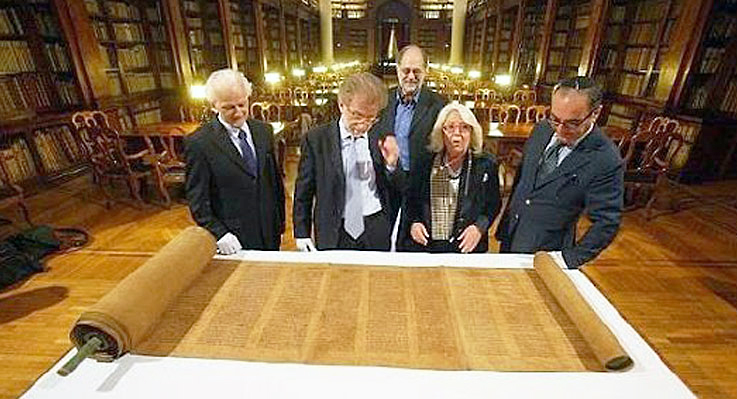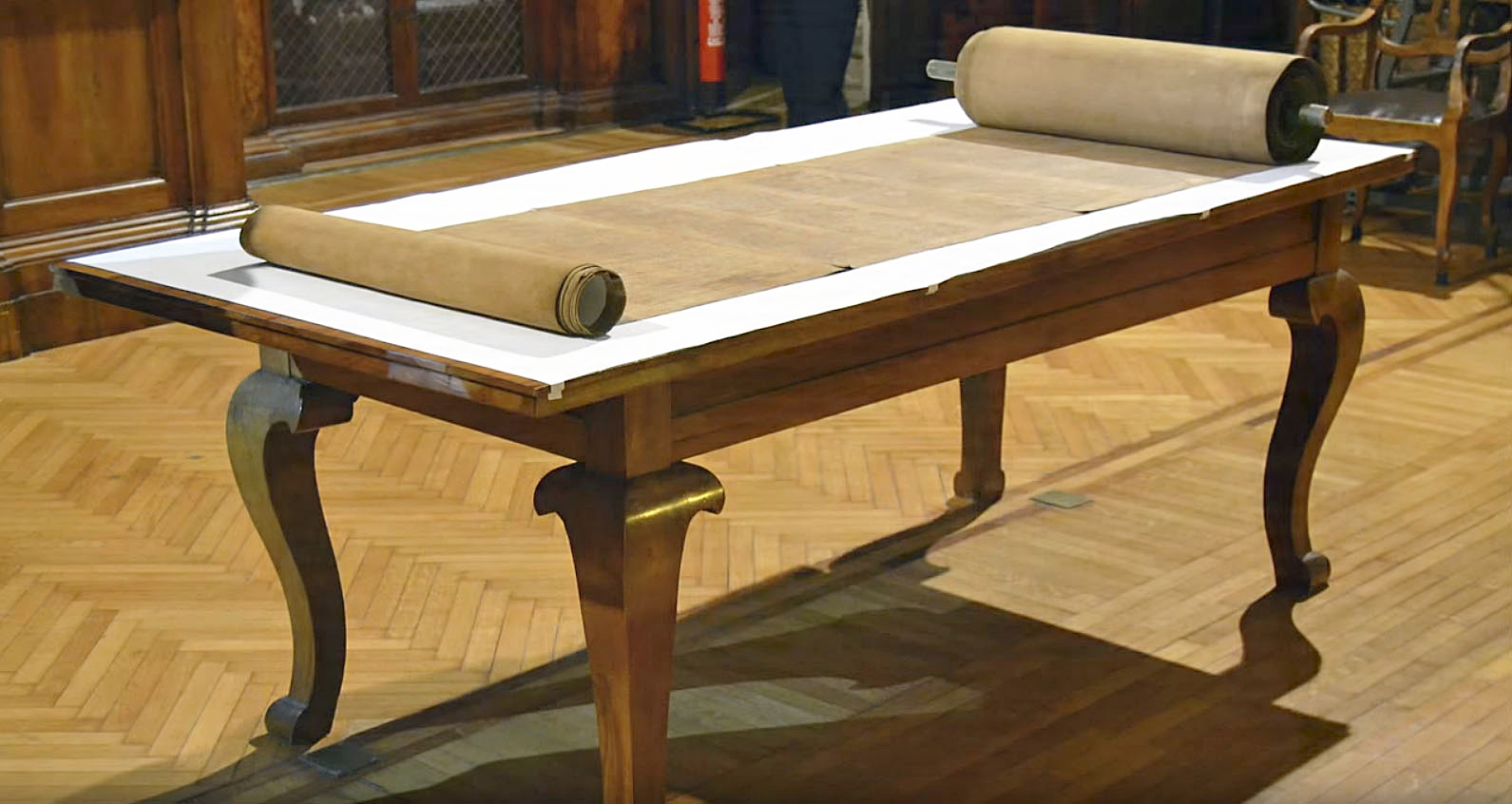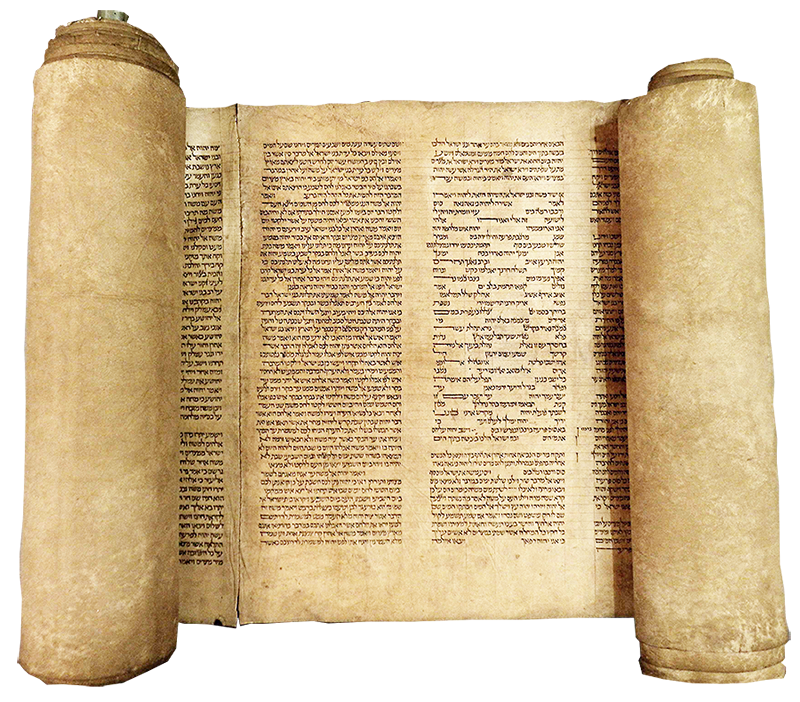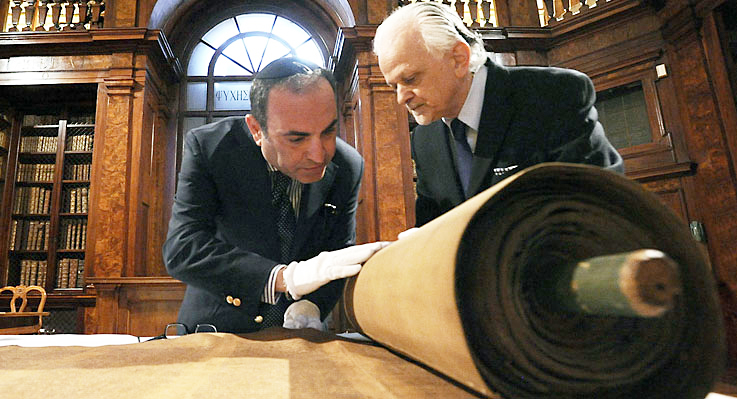
Bible, History, Archaeology
Bible,
History,
Archaeology
The manuscript in the University Library of Bologna
The manuscript in the University Library of Bologna
One of the oldest Torah scrolls (Sefer Torah) ever known has just been found at the University of Bologna in Italy. Mauro Perani, the researcher behind this historic discovery, tells us more.
 Introduction
Introduction
For as long as anyone can remember, the scroll has been the traditional medium for writing the Torah. The Hebrew text is intimately linked to this form of presentation. Christians, for their part, preferred the codex for writing the Bible, taking advantage of the technical revolution brought about by the Roman world.
Image opposite: the Bologna Torah scroll, the oldest known complete text of the Pentateuch. Mauro Perani.
The scroll discovered in Bologna is 36 metres long and 64 centimetres high: it contains the complete text of the first five books of the Bible - the Pentateuch (Genesis, Exodus, Leviticus, Numbers and Deuteronomy). Visit World of Religions wanted to find out more from Mauro Perani, Chair of Hebraic Studies at Bologna's Alma Mater University, who made the discovery:
How did you discover this new Torah scroll?

Image opposite: A scientific team in front of the Bologna scroll, with Mauro Perani on the left. Mauro Perani.
«I myself had to re-catalogue the University of Bologna's collection of Hebrew manuscripts, a small collection of around 36 items, and the Torah scroll in question. Intrigued by its writing and craftsmanship, which seemed to me to be much older than the 17th century, I asked for carbon 14 expertise. Today, this technique makes it possible to date manuscripts more precisely. The manuscript was then submitted to a specialized laboratory at the University of Salento (in Lecce, southern Italy): the result obtained fixed its dating at between the second half of the 12th century and the middle of the 13th century. This analysis was confirmed by the University of Chicago laboratory.
 What is the origin of this Torah scroll?
What is the origin of this Torah scroll?
Is it a manuscript produced in Italy, or does it come from somewhere else?
« This manuscript was probably produced in the Middle East, but it's impossible to know where exactly: perhaps in Babylonia, where the Jewish presence was very important, in Palestine, or in North Africa. The manuscript may have been brought to Italy from the Middle East by a Jewish traveler, or even by a Christian convert to Judaism. In any case, the Hebrew script used is undoubtedly of the Oriental type».
Image opposite: Mauro Perani, the researcher behind the discovery of the Bologna Torah. Mauro Perani.
 Who owned this manuscript before it reached the Bologna Library?
Who owned this manuscript before it reached the Bologna Library?
Image opposite: Mauro Perani with a scientist studying the text of the Bologna Torah. Mauro Perani.
Perhaps one of the region's thriving Jewish communities?
« The most likely hypothesis is that this manuscript was part of a monastery library. In the Middle Ages, monasteries were hotbeds of culture, and were particularly interested in Hebrew manuscripts and, more generally, Oriental manuscripts. Between the 12th and 13th centuries, Italy and France witnessed a renaissance of biblical studies based on philological analysis of the texts. The work of Rachi of Troyes - an immense scholar, Talmudist and commentator on sacred texts - is the most striking testimony to this. Like Jewish scholars, erudite monks devoted themselves to the study of the Scriptures, and monasteries became a privileged place for the conservation and transmission of manuscripts».
 What avenues of research might emerge from this discovery?
What avenues of research might emerge from this discovery?
«It's interesting to note that one of the greatest Jewish scholars of all time, Maimonides - who was born in Cordoba, Andalusia in 1138 - provides, in his work Michné Torah (Torah rehearsal), a strict standard for copyists and scribes on how the Torah should be copied. This standard must be observed with the utmost care, as the Torah is a sacred object that must be surrounded by every precaution. Of course, it took a long time for it to be effectively applied in Judaism.. But the interesting thing about the Torah scroll found in our library is that it doesn't conform to this norm, since it contains letters and signs that will be forbidden according to it».
Image opposite: Mauro Perani explains the text of the Bologna Torah. Mauro Perani.





